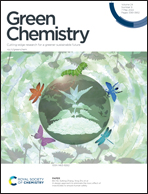A design approach to eliminate the toxic effect of insecticides to ensure human safety†
Abstract
Encapsulating toxic insecticides in a system to reduce their impact on non-target organisms and the environment, thereby enhancing pest control specificity and ensuring human safety, is important but there exist numerous challenges. In the present study, a cellulase-responsive carrier for the controlled release of avermectin (AVM) was prepared based on poly (ethylene glycol) diacrylate (PEGDA)-anchored porous regenerated cellulose microspheres (RCMs), with the goal of realizing their application as insecticide carriers for enzyme-mediated controlled release. Since the as-prepared RCMs showed an excellent loading ability for AVM, biocompatible PEGDA was used to block cellulose micropores and prevent the leakage of AVM. Thus, human safety was ensured. The results show that the cell viability was maintained at 90% in the AVM-loaded microspheres group after 5 days while it was only 70% in the free AVM group, indicating that the system is considerably safer for the human body. Furthermore, the AVM-loaded microspheres group showed excellent toxicological properties against Plutella xylostella and mole cricket. The lethality rates against the two target insects were 90 and 82%, respectively, at a concentration of 60 mg L−1, indicating the high efficacy of the insecticide. This work provides a feasible strategy to eliminate the toxic side effects of insecticides, which is of great significance to agricultural safety.



 Please wait while we load your content...
Please wait while we load your content...